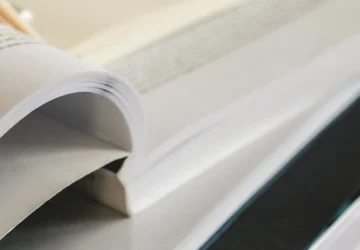
What Age Do Kids Start Reading and How to Support Their Learning
There is one question that lives in the back of nearly every new parent’s mind, a question often loaded with anxiety: “What age do kids start reading?”
We see other children in preschool who can already identify words. We hear conflicting advice. We are programmed to look for a single, specific milestone age 5, age 6, age 7 that will tell us if our child is “on track.”
Here is the simple, liberating truth: This is the wrong question.
Reading is not a switch that flips on a child’s sixth birthday. It is not a “milestone.” It is a process. It is a long, complex, and beautiful journey that begins not with their first day of school, but with their first day of life.
The average age for a child to be able to decode simple sentences independently is between 5 and 7. But this is just an average. Some children are ready at 4, and some are not ready until 8. Forcing a child to “read” before they are developmentally ready is the fastest way to make them hate reading.
The right question is not “when,” but “how.” How to support their learning at every developmental stage?
This guide is not a timeline. It is a map of the four distinct stages of literacy. Understanding these stages will empower you to stop worrying about the destination and, instead, provide the exact support your child needs on the journey.

The “Pre-reader” / The Listener (Ages 0-3)
This is the most misunderstood, and most important, stage of all. From birth to around age three, a child’s brain is not learning to read; it is learning to listen. This entire stage is about two things: Sound and Love.
During this window, the child is a “language sponge.” Their brain is building a vast, internal library of words, sounds, and sentence structures based only on what they hear. The most critical “pre-reading” skill they are developing is phonemic awareness. This is the secret prerequisite for all reading. It is the ability to hear the tiny, discrete sounds inside a spoken word. It’s the ability to hear that “cat” is made of three sounds: “c”…”a”…”t.” A child who cannot hear these sounds cannot be taught to read them.
So, how do you support this? First, you talk, constantly. Be a narrator for your day. “I am putting your blue socks on your little feet.” “That is a big, red truck.” You are actively building their oral vocabulary, which is the well from which they will draw when they do start to read.
Second, you sing and rhyme. Nursery rhymes are not just “cute.” They are powerful neurological tools. “Twinkle, twinkle, little star / How I wonder what you are.” This explicitly teaches the child’s ear to identify and play with the sounds of language.
The other half of this stage is emotional. The goal is “Book Love.” This is why you must read aloud every single day. At this age, it is not about them seeing the words. It is about them hearing you. They are absorbing the rhythm of language (prosody). But more importantly, they are forming a lifelong emotional association: a book is a source of comfort, warmth, and connection with you. Let them use durable board books, let them hold the book, turn the pages (even the wrong way), and yes, even chew on the corner. The goal is a positive, physical association. A book is a friend.

The “Emergent Reader” / The Page-Turner (Ages 3-5)
This is the stage where the child “emerges” into the world of print. They begin to understand a core, magical concept: the “squiggles” on the page are not just random drawings. They are talk, written down.
This is the stage of print awareness. The child learns that print is what tells the story, not just the pictures. They learn that we read from left to right, from top to bottom. They begin to recognize and name the letters of the alphabet (“That’s an ‘A’!”) and, critically, to connect those letters to their most common sounds (“‘A’ says ‘ah'”). They can now follow a plot and predict what might happen next.
The single most effective way to support this stage is “point-reading.” When you read aloud, run your finger under the words as you say them. This is not for them to read the words. It is to explicitly teach their brain: “I am not making this story up. I am not just looking at the pictures. I am reading this text, and it flows from left to right.”
You can reinforce this “print awareness” all day long by reading the “environmental print” around you. The world is a textbook. Point out the “STOP” sign. The “M” for McDonald’s. The “EXIT” sign. This reinforces the idea that print is everywhere and it has a consistent meaning. As you read, you can also ask them to engage with the book as an object: “Where is the front of the book?” “Where do I start reading on this page?” “Can you find a letter ‘T’ on this page?” This is how you shift their focus from the pictures to the text itself.

The “Decoding Reader” / The Worker (Ages 5-7)
This is the stage everyone asks about: “What age do kids start reading?” This is it.
“Decoding” is the technical term for “sounding it out.” The child is now, for the first time, reading independently by applying their phonics knowledge. They are painstakingly connecting letters to sounds and blending those sounds into a word: “C…a…t… cat!”
It is critical to understand that this stage is slow, laborious, and hard work. This is normal. The child’s brain is at 100% capacity, using all its cognitive resources on the mechanics of decoding. They have almost no mental bandwidth left for understanding the story’s meaning.
Your job as a parent is to be an “emotional safety net.” Your new mantra is patience. When they struggle over a word (and they will), your frustration will teach them that reading is stressful. Your patience will teach them that it is safe to try and fail.
To support them, you must provide the right tools. This means using “decodable readers.” These are simple books designed to be “sounded out,” using only the phonics rules the child has learned so far (e.g., “The fat cat sat on the mat.”). Yes, these books are boring for you, but they are essential for building a child’s confidence. At the same time, you can play games with “sight words” high-frequency words that break the rules (like “the,” “was,” “said”) and must be memorized.
Most importantly, you must use the “Tag Team” Method. You must separate the “work of decoding” from the “joy of story.”
-
Their “Work”: They practice their new skill by reading one “boring” decodable book to you for 10 minutes.
-
Your “Joy”: At bedtime, you read the book they love but cannot read themselves (like Harry Potter or The Chronicles of Narnia).
This strategy is critical. It ensures their vocabulary, comprehension, and imagination continue to grow at a high level, even while their mechanical skill is still developing. It constantly reminds them why all this hard work is worth it.

The “Fluent Reader” / The Comprehender (Ages 7+)
This is the magic pivot. This is the goal.
Through practice (especially with sight words), the act of decoding becomes automatic. The child no longer has to “sound out” every word. Their brain sees “the” and knows it instantly.
This frees up their cognitive load. They are no longer “learning to read.” They are now “reading to learn.”
Now, for the first time, they can read with reading fluency a combination of Accuracy (correct words), Rate (appropriate speed), and Prosody (expression and intonation). It sounds like they are talking, not just decoding. Because their brain is “free,” they can finally think about what they are reading: visualize the world, understand the characters’ motivations, and laugh at the jokes.
Your job as a parent changes here. It is no longer about words; it’s about ideas. You support them by discussing the book. Ask open-ended questions. “Why did the character do that?” “What do you think will happen next?” “That was a silly decision! What would you have done?” This is how you build true comprehension.
This is also the time to introduce chapter books and series. The Magic Tree House, Percy Jackson, Dog Man a series is incredibly powerful. It builds a familiar world and a cast of characters the child loves, which motivates them to read the next book, and the next. This is how they build reading “stamina.”
Finally, the most important long-term strategy is to model reading as a habit. Let them see you read. Put your phone down. Have a 20-minute “Family Reading Time” where everyone in the room (parents included) is quietly reading their own book. This models that reading is a “grown-up,” valuable, and relaxing activity. And do not judge their choices. If they want to read Captain Underpants 100 times or only want to read graphic novels, let them. Joy is the engine of fluency. Any reading is good reading. The “classics” can wait.
The Goal Is Not to Be First, but to Be Forever
So, what age do kids start reading? As you can see, the answer is “at birth.” And “at age 3.” And “at age 6.”
There is no “magic age.” There is only a “process.” The 5-7 year-old range is just the average for the “decoding” part of this much longer journey.
Your job is not to create the earliest reader in the preschool class. That is a race to nowhere. Your job is to create a lifelong reader.
And the “how-to” for that is simple. At every stage, you must make reading a source of connection, safety, joy, and discovery. If you do that, the “when” will take care of itself.
Recommended for you

What Is Close Reading and Why It Matters in Modern Education
We are drowning in words. We read more today than at any other point in human history. We scroll through articles. We skim headlines. We digest hot takes, social media posts, and endless comment threads. Our brains, rewired by the digital age, have become incredibly efficient at one specific skill. Skimming. We have trained ourselves […]

What Is Lateral Reading and How It Helps You Spot Fake News
We have a problem. We are all failing a test we don’t even know we’re taking. The test is the internet. The subject is “truth.” And the people failing the hardest are, paradoxically, the “smartest” ones. For our entire lives, we have been trained in a specific, “academic” way of reading. We were taught to […]

How to Publish a Book: A Step-by-Step Guide for New Authors
For every new author, the dream is the same. It is the moment of holding a finished, physical book in your hands. It is the smell of the paper, the weight of the object, the sight of your name on the cover. It is a dream of validation and completion. But between the final period […]

Sci-Fi vs Fantasy: Key Differences and What to Read
On the surface, the difference seems simple. One genre has spaceships and aliens. The other has dragons and elves. Science Fiction, we are told, is about the future, and Fantasy is about the past. This is a shallow analysis. And it is wrong. This “aesthetic” definition one of props and settings collapses immediately under any […]

How Fiction Can Support Learning and Imagination
For centuries, a persistent myth has haunted our perception of reading. It is the myth of the “serious” versus the “frivolous.” In this binary, non-fiction is the “serious” stuff. It is the realm of facts, history, science, and learning. Fiction, on the other hand, is cast as the “frivolous” sibling. It is entertainment. It is […]

Travel Through Pages: Literature for Explorers
What defines “literature for explorers”? The easy answer is a story about a journey. A book that moves, that chronicles a voyage from a safe harbor to a wild, unknown land. We think of travelogues, memoirs, or survival stories. But this definition is incomplete. It’s too literal. A true story for explorers is not just […]

Choosing Textbooks for First-Year Students
Becoming a first-year university student involves a series of new, confusing, and often expensive decisions. None is more immediate or frustrating than your first trip to the campus bookstore. You are handed a list of required texts for your five new classes, and the total at the bottom of the receipt could easily fund a […]

Does Reading Make You Smarter? The Science Behind the Habit
Does reading make you smarter? The simple, reflexive answer is “yes.” It’s a piece of received wisdom we’ve all internalized. We are told to “read more” in the same way we are told to “eat our vegetables.” We know it’s good for us, but the specific reasons remain abstract. What does “smarter” even mean? If […]